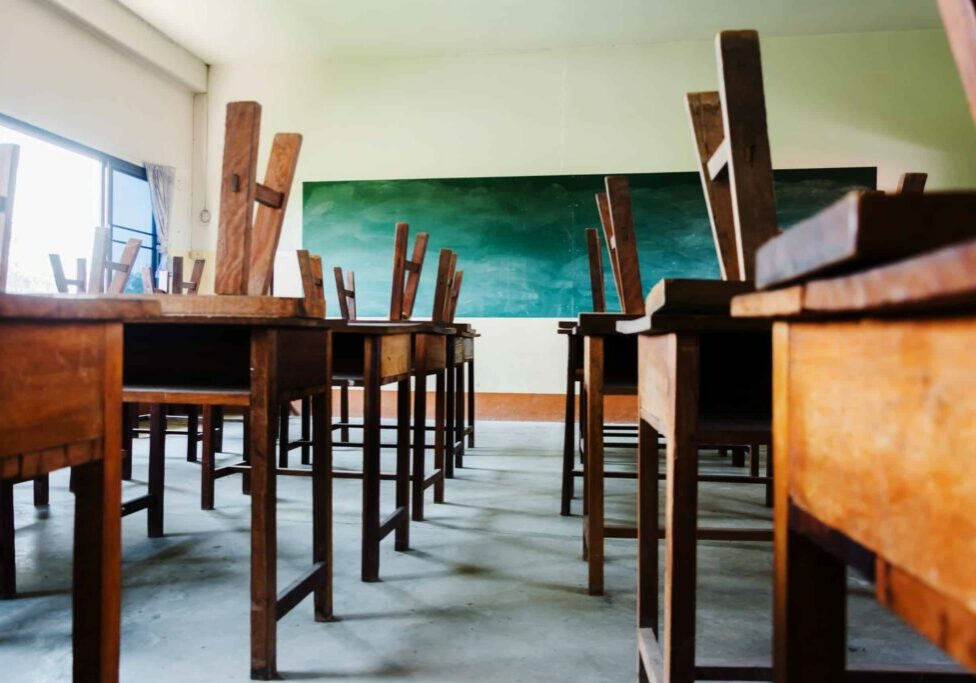If there is one goal that the previous presidential administration and the current one share, it is the reopening of schools for full-time, in-person instruction. And as the survey data reported in last month’s NJEA Review reveals, it’s a goal that NJEA members share as well.
NJEA members are as anxious as any parent, student or presidential administration to return to full-time, in-person instruction. Members reported that working from home or in a hybrid environment isn’t less stressful, it’s more stressful. It’s also a lot more work. NJEA members reported a 20% workload increase—equivalent to an additional day of work without an extra day of the week in which to do it.
The difference between the Biden and Trump administrations—and NJEA members—was not the goal of reopening schools, but how to get there.
Last summer, as the new school year approached, former Secretary of Education Betsy DeVos’ and former President Donald Trump’s plan was to bully schools into reopening. In July, for example, Politico reported that DeVos pledged to “use the ‘bully pulpit’ to pressure states to reopen schools amid the pandemic.”
In the interest of opening schools at any cost, Trump and DeVos repeatedly downplayed the risks, basing their intransigence on scant evidence regarding the risk of serious illness among children or the risk of coronavirus transmission from children to each other and to adults. Meanwhile, Drs. Deborah Birx and Anthony Fauci cautioned that the issue needed more study.
In what often appeared to be more about his own chances for reelection than the health and safety of children and educators, Trump insisted through public remarks and tweets that schools must reopen. The resources to make that possible, however, were sorely lacking.
President Biden, concerned about the economy and the health of children and educators, also wants schools to reopen, but his plan does not involve bullying states into opening school buildings no matter the cost. On his second day in office, President Joe Biden issued his “Executive Order on Supporting the Reopening and Continuing Operation of Schools and Early Childhood Education Providers.” It was a breath of much-needed fresh air.
The executive order opens with two principles to guide the federal government’s response to the COVID-19 crisis with respect to preK-12 schools and institutions of higher education, putting public health in the lead.
“First, the health and safety of children, students, educators, families and communities is paramount,” the order contends. “Second, every student in the United States should have the opportunity to receive a high-quality education, during and beyond the pandemic. Accordingly, it is the policy of my administration to provide support to help create the conditions for safe, in-person learning as quickly as possible; ensure high-quality instruction and the delivery of essential services often received by students and young children at school … and address educational disparities and inequities that the pandemic has created and exacerbated.”
Throughout the executive order, evidence-based health and safety come first. The order requires the secretary of education, in consultation with the secretary of health and human services, to use scientific evidence to decide whether and how to reopen, and how to remain open, for in-person learning; and in safely conducting in-person learning, including by implementing mitigation measures such as cleaning, masking, proper ventilation and testing.”
The order requires the secretary of health and human services to “facilitate the collection of data needed to inform the safe reopening and continued operation of elementary and secondary schools … and ensure that such data are readily available to state, local, tribal, and territorial leaders and the public, consistent with privacy interests, and that such data are disaggregated by race, ethnicity and other factors as appropriate.”
As that directive implies, the order also addresses the uneven educational impact of the pandemic. It directs the Department of Education’s assistant secretary for civil rights to “deliver a report as soon as practicable on the disparate impacts of COVID-19 on students in elementary, secondary and higher education, including those attending historically black colleges and universities, tribal colleges and universities, Hispanic-serving institutions, and other minority-serving institutions.”
The order does not expect the federal government to work in a vacuum, directing the secretary of education to consult with students; educators; unions; families; state, local, tribal, and territorial officials; and members of civil rights and disability rights organizations.
For students, families and educators entering a school building full time will come down to trust. That trust cannot be earned by angry tweets at 3 a.m. or unscientific claims shouted at rallies. It is earned when science and public health, not politics and pressure, are guiding the decision to fully reopen. President Biden’s executive order goes a long way in restoring that trust.
